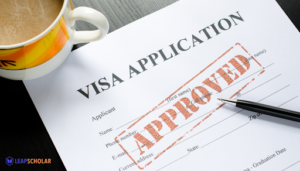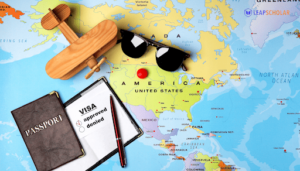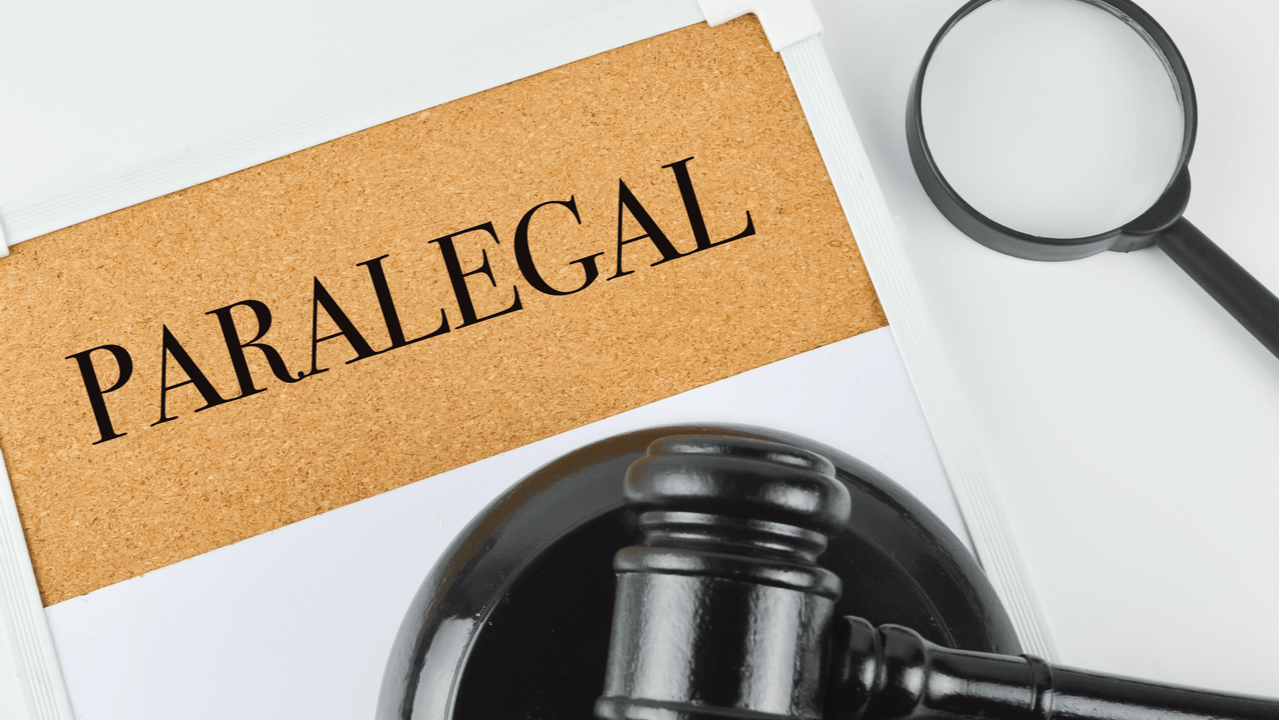Have you dreamt of pursuing your studies in the vibrant land Down Under? Australia, with its world-class universities and diverse culture, beckons international students every year. But securing an Australian student visa can feel like a hurdle.
Understanding the Australian student visa success rate in 2024 can ease your worries and equip you for the process.
In 2022-23, the Australian government granted visas to a staggering 29% rise in international students – a significant increase. With access to the latest information on the Australia Student Visa Success Rate 2024 on the Department of Home Affairs website, aspiring international students can approach their applications with a sense of optimism for the year ahead!
This comprehensive guide delves into the latest statistics on Australian student visa success rates in 2024. We will explore factors influencing approval, address common concerns like the chances of getting an Australian student visa after refusal, and equip you with valuable information to navigate your application journey with confidence.
Crack IELTS in 4 Weeks! IELTS 8 Band Guarantee

Ace IELTS with Band Guarantee. Get access to Live Classes & 100+ Mock Test. Join Free IELTS Masterclass Now!
Crack IELTS in 4 Weeks! IELTS 8 Band Guarantee
Ace IELTS with Band Guarantee. Get access to Live Classes & 100+ Mock Test. Join Free IELTS Masterclass Now!

Key Highlights: Australia Student Visa Guide (2024)
| Feature | Key Information |
| Australian Student Visa Success Rate | 85.1% – 86.7% (as of late 2023/2024) |
| Rejection Rate | 13.3% – 14.9% (as of late 2023/2024) |
| Types of Visas | Subclass 500 (Full-time Study), Subclass 590 (Guardian), Subclass 407 (Short-term Training) |
| Higher Success Rate | Subclass 500 (Full-time Registered Programmes) |
| Common Rejection Reasons | Academic qualifications, Genuine Temporary Entrant requirement, English language skills, financial resources, incomplete documentation |
| Re-applying after Rejection | Possible, address reasons for rejection, potentially seek professional guidance |
| Benefits of Studying in Australia | World-class education, diverse programmes, multicultural environment, post-study work opportunities, breathtaking landscapes |
| Resources | Department of Home Affairs website |
Read: Post Study Work Permit in Australia for Indian Students 2024
Armed with the success rates in mind, let’s unravel the different visa paths you can take to your dream Australian education.
Latest Updates in 2024
There’s positive news for aspiring Australian student visa success rate in 2024.
- We have seen a significant increase in successful student visa applications as the international student population reached 713,145 as of February 2024.
- This translates to encouraging success rates for students chasing their academic dreams Down Under.
- Travel restrictions due to COVID-19 have eased, leading to a return to pre-pandemic approval rates for student visas, particularly for full-time registered programmes (Subclass 500).
- However, immigration policies can change. Always ensure you are using the most up-to-date information and requirements from the official Department of Home Affairs website.
Now, let’s dive into the nitty-gritty of the visas themselves, shall we?
Types of Australian Student Visas
Calling all aspiring globetrotters and scholars! Unveiling the key to unlocking your Australian student adventure: understanding the visa options. Let’s explore the three main types to find your perfect study Down Under match!
There are three main types of Australian visas relevant to international students:
| Visa Subclass | Description |
| Student Visa (Subclass 500) | This is the most common visa for international students enrolling in full-time registered courses at an Australian university, vocational education and training (VET) provider, or registered secondary school. |
| Student Guardian Visa (Subclass 590) | This visa allows parents or guardians to accompany a student under 18 who is studying in Australia on a Subclass 500 visa. |
| Training Visa (Subclass 407) | This visa is for students enrolling in short-term vocational training courses that are not registered on the Commonwealth Register of Institutions and Courses for Overseas Students (CRICOS). |
Also read: SOP for Australian Visa
Australian Student Visa Validity
The duration for which your Australian student visa remains valid typically aligns with the length of your chosen program. Here’s what you need to know:
Below is the table to understand better:
| Course Length | Course Completion Timeframe | Typical Visa Stay Period |
| 10 months or longer | Ends November-December (Australian academic year) | Up to March 15th of the following year (covers post-study period) |
| 10 months or longer | Starts January to October | 2 months longer than your course duration |
| Less than 10 months | Any timeframe | 1 month longer than your course duration |
NOTE: The maximum length of stay for a Student visa will generally not exceed 5 years.
Alright, now that you’ve wrapped your head around the visa validity, let’s dive into the numbers that really matter – the success and rejection rates. Spoiler? The odds might be more in your favour than you think.
Australian Student Visa Success Rate 2024 And Rejection Rate
Understanding the overall Australian student visa success rate in 2024 is a good starting point, but it’s important to consider the possibility of rejection as well. Here’s a breakdown of the latest data:
Table 1: Australian Student Visa Success and Rejection Rates (as of Late 2023/2024)
| Source | Success Rate | Rejection Rate |
|---|---|---|
| UniZcco (based on FY 2024 data) | 85.1% – 86.7%(est) | 13% |
| Thepienews (Subclass 500 visa) | 89.99% | 11% |
| Universityworldnews | 82% | 8% |
| Student Visa (based on FY 2023) | 87%(est.) | 11% |
This table provides a snapshot of the Australian student visa success rate 2024 and rejection rate for the current year.
**NOTE: For the latest data for australian student visa success rate 2024 check the official government website.
It’s important to remember that these are national averages and the actual success rate for your application can be influenced by various factors, which we’ll explore in the next section.
Student Visa Rejection Rate Australia
According to a recent report by the Department of Home Affairs, in the first half of Australia’s 2023 fiscal year (ending December 2023), nearly 1 in 5 student visa applications were rejected. This represents a significant increase compared to previous years, highlighting the importance of a well-prepared application that addresses all requirements.
Leapscholar can help you ease the application process. Learn more here
Some testimonies are below:
“The best decision was to go with LeapScholar as they made
my whole process of going abroad a smooth journey!” – Kriti, Cardiff University
“It has been my best decision to join LeapScholar. The entire
the process has been very smooth from the shortlisting of universities
to the overall application process.” – Garima Shree, Humber College
Here’s a breakdown of some common reasons for Australian student visa rejection:
- Academic Qualifications: Not meeting the minimum academic entry requirements for your chosen program is a leading cause of rejection. Ensure you have the necessary academic transcripts, diplomas, and certificates to demonstrate your eligibility.
- Genuine Temporary Entrant Requirement (GTE): Australian immigration authorities need to be convinced that you genuinely intend to study in Australia and return to your home country after completing your program. A well-written Statement of Purpose (SOP) outlining your educational goals, career aspirations, and ties to your home country is crucial in addressing this requirement.
- English Language Requirements: Not meeting the minimum English language proficiency score specified by your chosen program and visa subclass can lead to rejection. Familiarise yourself with the required tests (e.g., IELTS, TOEFL) and ensure you achieve the necessary score.
- Financial Requirements: Demonstrating sufficient financial resources to cover your tuition fees and living expenses in Australia is essential. You’ll need to provide evidence of financial support, such as bank statements, scholarships, or sponsorship letters.
- Overseas Student Health Cover (OSHC): Having Overseas Student Health Cover (OSHC) is mandatory for all international students in Australia. Make sure you obtain OSHC from a registered provider before lodging your visa application.
- Incomplete or Incorrect Documentation: Submitting incomplete or inaccurate documentation can significantly delay your application or even lead to rejection. Double-check all documents for accuracy and ensure you meet all the specific requirements outlined by the Department of Home Affairs.
- Missing Medical Examination: As part of the visa application process, you may be required to undergo a medical examination by a designated medical practitioner. Not completing this requirement can result in rejection.
By understanding these common pitfalls and ensuring your application addresses each aspect thoroughly, you can significantly improve your chances of securing or upping your chances for Australian student visa success rate in 2024!
Read more: USA vs Australia: Which is Better for Indian Students?
Australia Student Visa Fee
Dreams Down Under Don’t Come Free (But They’re Worth It!): Let’s talk about the visa fee for your Australian student adventure. Here’s a breakdown of the key aspects:
- Main Application Charge: The primary cost associated with an Australian student visa is the visa application charge for a Subclass 500 visa. As of this writing (late 2023/2024), this fee stands at approximately ₹38,573.
- Important Note: This is just the starting point. There may be additional costs involved depending on your circumstances, such as health checks, character certificates, and any necessary translations of documents. Be sure to factor in these potential expenses when budgeting for your student visa application.
Got a bump in your visa journey? No sweat! Let’s explore how a ‘no’ isn’t the end and what your comeback could look like.
Chances of Getting an Australian Student Visa After Refusal
Facing an Australian student visa rejection can be disheartening, but it doesn’t have to be the end of your study abroad dreams. Many students successfully re-apply after addressing the reasons for the initial rejection.
Here’s a breakdown of factors influencing your chances after a refusal:
Let’s get down to brass tacks – you’re ready for round two against the visa process. Here’s your strategic playbook.
Also read: Guide to the Subclass 476 Skilled
How To Re-apply for an Australian Student Visa After Refusal?
While an Australian student visa rejection can be discouraging, it shouldn’t deter you from pursuing your educational goals. Many students successfully re-apply after addressing the shortcomings identified in their initial application.
Here’s a breakdown of key steps to consider for a successful reapplication:
- Understanding the Rejection Reason: The first step is to meticulously review the rejection letter from the Department of Home Affairs. It should outline the specific reason(s) for the denial. Analyse this information carefully and use it to address those shortcomings in your re-application.
- Taking Corrective Action: Once you understand the reason for rejection, take concrete steps to rectify the issue. Refer back to the previous section (Student Visa Rejection Rate Australia) for a detailed explanation of common rejection reasons and potential solutions.
- Seeking Professional Guidance: Consider seeking assistance from an immigration lawyer or education consultant experienced in Australian student visas. Their expertise can be invaluable in navigating the complex application process and ensuring your re-application is strong.
- Time Since Initial Application: The time elapsed since your initial application can also play a role. If the rejection was recent, addressing the issues swiftly and re-applying promptly can demonstrate your continued commitment to studying in Australia.
Important Considerations:
- There’s no guaranteed chance of getting an Australian student visa after refusal. However, by understanding the reasons for rejection, taking corrective measures, and potentially seeking professional help, you can significantly improve your chances of success in your re-application.
- Remember, immigration policies can change. Always ensure you’re using the most up-to-date information and requirements from the Department of Home Affairs website.
Don’t get disheartened because Leapscholar has helped many students get past this block! Start your journey with Leapscholar now!
After dealing with the logistics, let’s remind ourselves why this hurdle is worth it – the unparalleled allure of studying in Australia.
Why Australia Stands Out: Top Reasons to Choose Australia for Your Studies
Did you know that Australia consistently ranks among the top 3 destinations globally for international students? Here’s why Australia might be the perfect place to launch your academic adventure:
- World-Class Education: Australian universities boast a stellar reputation, consistently ranking high in international university rankings. You’ll gain a globally recognised qualification from a prestigious institution.
- Diverse Range of programmes Australia offers a vast array of academic programmes across various disciplines, from cutting-edge technology and environmental science to renowned arts and humanities programmes. There’s something for everyone!
- Multicultural & Welcoming Environment: Australia is known for its friendly and multicultural population. You’ll experience a vibrant and inclusive atmosphere on campus and beyond.
- Post-Study Work Opportunities: An Australian student visa often allows you to work part-time while studying and potentially even after graduation. This valuable work experience can enhance your resume and potentially pave the way for a successful career in Australia.
- Breathtaking Landscapes & Lifestyle: Australia is a land of stunning natural beauty, from iconic beaches and rainforests to the vast outback. You will have the opportunity to explore this incredible country while pursuing your academic goals.
All these insights boil down to one thing – making your Aussie academic dream a reality. Let’s wrap up with some final words of encouragement.
Click here for more details
Read: If you are looking for the next best intake, consider reading this!
To Sum Up
Planning to study in Australia? This guide gives you the inside scoop on Australian Student Visa success rates in 2024.
- High Success Rates: Subclass 500 visas (full-time programmes) boast an 85-87% success rate (as of late 2023/2024)
- Avoid Rejection: Understand common pitfalls like weak academic qualifications, unclear GTE statements, or inadequate finances
- Re-application Strategies: A well-reasoned re-application addressing rejection reasons can increase your chances
Bonus Tips for Success:
- Scholarships: Explore university and government scholarships to minimise financial burdens
- Post-Study Work: Leverage your visa for work experience, potentially paving the way for an Australian career
With meticulous planning, a strong application, and these valuable insights, you’re well on your way to achieving your Aussie academic dream! Good luck!
Don’t go at it alone! Partner with our experienced team and turn your dream of studying in Australia into a reality. Visit LeapScholar today and take the first step towards your academic adventure!
Frequently Asked Questions
-
Q: What is the age limit to apply for an Australian student visa?
A: There’s no specific age limit to apply for an Australian student visa. However, some education providers may have their age restrictions for certain programmes. Generally, universities in Australia accept applicants 18 years and older for undergraduate programmes. For vocational training or high school diplomas, age limitations might be lower. It’s recommended to check with your chosen institution for any age-related requirements.
-
Q: Will there be any interview for getting an Australian student visa?
A: In most cases, an interview won’t be required for an Australian student visa application. However, the Department of Home Affairs may request an interview at their discretion if they need further clarification on your application, particularly for applications with complexities like significant gaps in education history or unclear financial support documents. If selected for an interview, consider it an opportunity to elaborate on your application and demonstrate your genuine interest in studying in Australia. Prepare beforehand to answer questions about your chosen program and future goals confidently.
-
Q: How long does it take for a student visa to be processed for Australia?
A: The processing time for an Australian student visa can vary depending on your circumstances and the current workload at the Department of Home Affairs. It typically takes anywhere between 4 to 12 weeks to process a complete application. **You can check the Department of Home Affairs website for their current processing times to get a more accurate timeframe. They may also offer online tools to track the progress of your application once it has been submitted.
-
Q: Is it difficult to get a student visa for Australia?
A: The difficulty of obtaining an Australian student visa depends on several factors, including meeting all eligibility requirements, submitting a well-prepared application, and demonstrating a genuine intention to study in Australia. By carefully following the guidelines and addressing all requirements, you can significantly increase your chances of success.
-
Q: Can I work while studying in Australia on a student visa?
A: Yes, international students on a Subclass 500 visa are generally allowed to work up to 40 hours per fortnight during designated school breaks and full-time during vacation periods. This allows you to gain valuable work experience and contribute to your living expenses.
-
Q: What is the cost of an Australian student visa?
A: The main cost associated with an Australian student visa is the visa application charge for a Subclass 500 visa, which is currently ₹38409 approximately. It’s important to note that this is just the starting point. There may be additional costs involved depending on your circumstances, such as health checks, character certificates, and any necessary translations of documents. Be sure to factor in these potential expenses when budgeting for your student visa application.
-
Q: Can I extend my Australian student visa?
A: In a few cases, you may be eligible to extend your Australian student visa. This typically applies if your chosen program extends beyond the initial visa validity period. Refer to the Department of Home Affairs website for detailed information on extending your student visa
-
Q: What happens if my student visa gets rejected?
A: As discussed earlier, a student visa rejection doesn’t necessarily mean the end of your study abroad dream. Carefully review the rejection letter to understand the reason(s) for denial. Take corrective actions, and consider seeking professional guidance before re-applying especially before your intake if it’s inching closer for a successful Australian student visa success rate in 2024.
-
Q: Where can I find the latest information on Australian student visas?
A: The Department of Home Affairs website is your one-stop shop for the most up-to-date information on Australian student visas, including the latest details on the Australia Student Visa Success Rate 2024. This website provides comprehensive details on application procedures, eligibility requirements, and any recent changes or updates to the visa process. Bookmarking this website as a trusted resource throughout your student visa journey is highly recommended.
-
Q: What are the English language requirements for an Australian student visa?
A: To be eligible for an Australian student visa, you’ll need to demonstrate competency in English. This is typically assessed through internationally recognised tests like IELTS, TOEFL, or PTE Academic. The specific score requirement will vary depending on your chosen course level (e.g., a higher score for postgraduate studies). Make sure to check the Department of Home Affairs website or your educational institution for the exact English language proficiency requirements for your program.
Read more: Master your IELTS skills
-
Q: What financial resources do I need to show for an Australian student visa application?
A: For a successful Australian student visa success rate in 2024, while you apply for your student visa, you’ll need to provide evidence of sufficient financial resources to support yourself during your studies in Australia. This typically involves showcasing funds for tuition fees, living expenses, and airfare. The required amount can vary depending on your location, study duration, and chosen lifestyle. The Department of Home Affairs outlines indicative cost details on its website.
-
Q: Can I bring my family with me on an Australian student visa?
A: In some cases, you might be eligible to apply for a student guardian visa (Subclass 590) for your dependents (spouse or children under 18) to accompany you while you study in Australia on a Subclass 500 visa. This visa allows them to stay in Australia for the duration of your student visa, with certain conditions regarding work limitations. It’s important to note that applying for a student guardian visa involves additional requirements and processing times. You can find detailed information on the Department of Home Affairs website.







